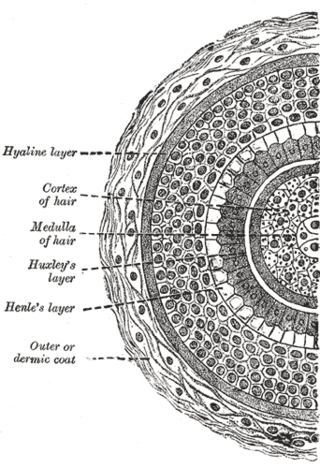
Hair is a protein filament that grows from follicles found in the dermis. Hair is one of the defining characteristics of mammals. The human body, apart from areas of glabrous skin, is covered in follicles which produce thick terminal and fine vellus hair. Most common interest in hair is focused on hair growth, hair types, and hair care, but hair is also an important biomaterial primarily composed of protein, notably alpha-keratin.

Acanthocephala is a group of parasitic worms known as acanthocephalans, thorny-headed worms, or spiny-headed worms, characterized by the presence of an eversible proboscis, armed with spines, which it uses to pierce and hold the gut wall of its host. Acanthocephalans have complex life cycles, involving at least two hosts, which may include invertebrates, fish, amphibians, birds, and mammals. About 1420 species have been described.

In vertebrate anatomy, ribs are the long curved bones which form the rib cage, part of the axial skeleton. In most tetrapods, ribs surround the chest, enabling the lungs to expand and thus facilitate breathing by expanding the chest cavity. They serve to protect the lungs, heart, and other internal organs of the thorax. In some animals, especially snakes, ribs may provide support and protection for the entire body.

The Red Skull is a supervillain appearing in American comic books published by Marvel Comics and its predecessor Timely Comics. In Captain America Comics #1, the Red Skull's secret identity was revealed to be George Maxon; It would be retroactively established that he was merely a decoy who was working for the real Red Skull. Albert Malik would later adopt the Red Skull mantle, only to be killed in a plot orchestrated by the original.

The flat-headed cat is a small wild cat with short reddish-brown fur. Its head is elongated, and its ears are rounded. Its slender body is 41 to 50 cm long with a tail of 13 to 15 cm, and it weighs 1.5 to 2.5 kg.

The red-necked phalarope, also known as the northern phalarope and hyperborean phalarope, is a small wader. This phalarope breeds in the Arctic regions of North America and Eurasia. It is migratory, and, unusually for a wader, winters at sea on tropical oceans.

Göbekli Tepe is a Neolithic archaeological site in the Southeastern Anatolia Region of Turkey. The settlement was inhabited from c. 9500 to at least 8000 BCE, during the Pre-Pottery Neolithic. It is famous for its large circular structures that contain massive stone pillars—the world's oldest known megaliths. Many of these pillars are decorated with anthropomorphic details, clothing, and sculptural reliefs of wild animals, providing archaeologists rare insights into prehistoric religion and the particular iconography of the period. The 15 m (50 ft)-high, 8 ha (20-acre) tell is densely covered with ancient domestic structures and other small buildings, quarries, and stone-cut cisterns from the Neolithic, as well as some traces of activity from later periods.

Thyreophora is a group of armored ornithischian dinosaurs that lived from the Early Jurassic until the end of the Cretaceous.
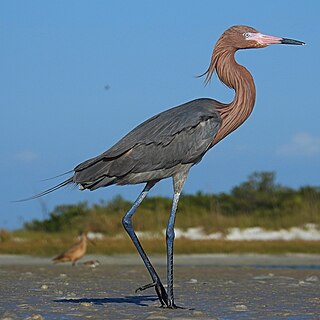
The reddish egret is a medium-sized heron that is a resident breeder in Central America, the Bahamas, the Caribbean, the Gulf Coast of the United States, and Mexico. The egret is known for its unusual foraging behavior compared to other herons as well as its association with mud flats, its habitat of choice.

A Schmidt camera, also referred to as the Schmidt telescope, is a catadioptric astrophotographic telescope designed to provide wide fields of view with limited aberrations. The design was invented by Bernhard Schmidt in 1930.
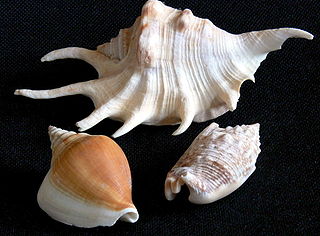
Strombidae, commonly known as the true conchs, is a taxonomic family of medium-sized to very large sea snails in the superfamily Stromboidea, and the Epifamily Neostromboidae. The term true conchs, being a common name, does not have an exact meaning. It may generally refer to any of the Strombidae but sometimes is used more specifically to include only Strombus and Lambis. The family currently includes 26 extant, and 10 extinct genera.
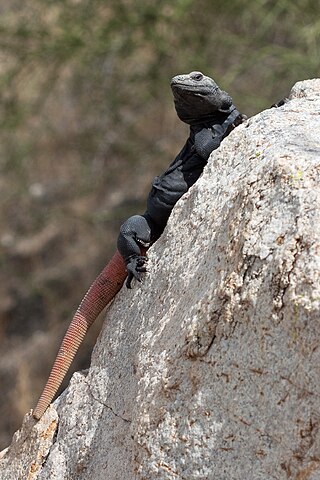
Sauromalus ater, also known as the common chuckwalla, is a species of lizard in the family Iguanidae. It inhabits the Sonoran and Mojave Deserts of the Southwestern United States and northwestern Mexico. Its range extends from eastern California, Utah, and Nevada south to Baja California and Sonora.
Gnathostoma spinigerum is a parasitic nematode that causes gnathostomiasis in humans, also known as its clinical manifestations are creeping eruption, larva migrans, Yangtze edema, Choko-Fuschu Tua chid and wandering swelling. Gnathostomiasis in animals can be serious, and even fatal. The first described case of gnathostomiasis was in a young tiger that died in the London Zoo in 1835. The larval nematode is acquired by eating raw or undercooked fish and meat.
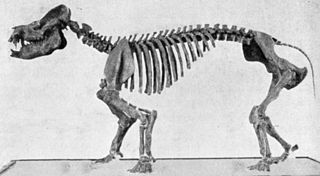
Coryphodon is an extinct genus of pantodonts of the family Coryphodontidae.
The lobed stingaree is a common species of stingray in the family Urolophidae, endemic to southern Western Australia in shallow, inshore sand and seagrass habitats. This species is plain sandy in color above and has a broad, rounded pectoral fin disc. It is characterized by an enlarged, semicircular skin lobe of unknown function on the inner rim of each nostril. Its tail is slender, with lateral skin folds and a lance-like caudal fin but no dorsal fin. The maximum recorded width is 27 cm (11 in).

Lobatus raninus, common name the hawk-wing conch, is a species of medium to large sea snail, a marine gastropod mollusk in the family Strombidae, the true conchs.

The Mwanza flat-headed rock agama or the Spider-Man agama, because of its coloration, is a lizard reptile in the family Agamidae, found in Tanzania, Rwanda, and Kenya.

Micrurus nigrocinctus, commonly known as the Central American coral snake, is a species of a highly venomous snake in the family Elapidae. The species is endemic to Latin America from southern Mexico, Central America, to north Colombia. There are six recognized subspecies, including the nominate subspecies described here.

Titanostrombus galeatus, commonly known as the Eastern Pacific giant conch, is a species of large sea snail, a marine gastropod mollusk in the family Strombidae, the true conchs and their allies.

The Porsche 992 is the eighth and current generation of the Porsche 911 sports car, which was introduced at the Porsche Experience Center, Los Angeles on 27 November 2018.


















